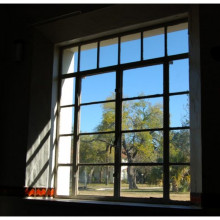Windows, computer screens and phones that never get grubby? What's the chemistry making that self cleaning glass possible?
In this episode

00:00 - How is self cleaning glass made?
How is self cleaning glass made?
There are two types of self cleaning glass. The more common one makes use of titanium dioxide nanoparticles that are deposited on the surface. They are not simple pieces of glass, as they are covered in an ultra-thin coating, a layer roughly 10-25 nanometers thick. To put that into perspective, that's about 1000 times thinner than a piece of human hair. The organic dirt that settles on these surfaces is broken down by UV light with the help of these particles. In this way the sun effectively burns away the dirt, but since UV light is required, this works best outdoors and is therefore not ideal for smartphones.
The second effect uses an applied substance that strongly repels water. The resulting surface is super-hydrophobic - water-hating - so repels nearly any substance that it comes into contact with. Any type of dirt is easily removed, by simply rinsing the surface with water, for example in a rain shower. Strictly speaking, this surface is not self-cleaning since it requires water and should therefore rather be termed "easy clean surface". This is still in development and might well be a solution to prevent fingerprints on smartphones in the future, particularly because some of these surfaces also repel oils, so that fingerprints are less likely form readily on these surfaces.










Comments
Add a comment